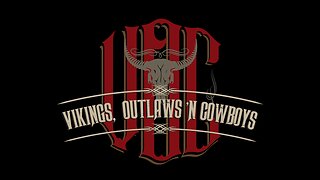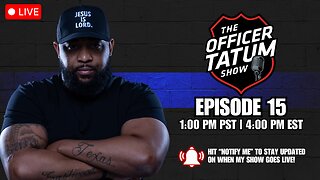Premium Only Content

The Development of Language Series (Part 3/4): Activities to Support 2-6 Year Old Children
Timecodes:
0:00 Intro
0:43 2-4 Year Old Lessons
11:20 4-5 Year Old Lessons
20:51 5 Year Old Lessons
Video Source (MontessoriGuide.Org):
https://vimeo.com/78757947
Three Period Lesson:
https://www.youtube.com/watch?v=rqt6esHaI5o&t=2167s
Classified Cards and Extensions:
https://www.youtube.com/watch?v=GqncVIqZ7go&t=1s
Website Sources:
http://dyslexiahelp.umich.edu/professionals/dyslexia-school/phonological-awareness
http://www.defeat-dyslexia.com/2016/04/a-quick-guide-to-dyslexia-and-working-memory/
https://dyslexiaida.org/working-memory-the-engine-for-learning/
https://ortongillinghamonlinetutor.com/rapid-automatized-naming-and-fluency/
https://ortongillinghamonlinetutor.com/the-big-five-teaching-syllable-types/
Montessori Sources:
Lillard, Paul Polk. (1972). Montessori a modern approach: the classic introduction to Montessori for parents and teachers. New York, NY: Schocken Books Inc.
Montessori, Maria. (Vol 1). (2007). The absorbent mind. Amsterdam, The Netherlands: Montessori-Pierson Publishing Company.
Montessori, Maria. (Vol 2). (2017). The discovery of the child. Amsterdam, The Netherlands: Montessori-Pierson Publishing Company
Standing, E.M. (1957) Maria Montessori: her life and work. New York, NY: Penguin Group.
Montessori Institute of San Diego
Academic Sources (paywall)
Bratsch-Hines, M., Vernon-Feagans, L., Pedonti, S., & Varghese, C. (2019). Differential effects of the targeted reading intervention for students with low phonological awareness and/or vocabulary. Learning Disability Quarterly, 43(4), 214–226. https://doi.org/10.1177/0731948719858683
Catts, H. W., McIlraith, A., Bridges, M. S., & Nielsen, D. C. (2016). Viewing a phonological deficit within a multifactorial model of dyslexia. Reading and Writing, 30(3), 613–629. https://doi.org/10.1007/s11145-016-9692-2
Crosby, S. A., Rasinski, T., Padak, N., & Yildirim, K. (2014). A 3-year study of a school-based parental involvement program in early literacy. The Journal of Educational Research, 108(2), 165–172. https://doi.org/10.1080/00220671.2013.867472
Infurna, C. J., & Montes, G. (2020). Two years vs. one: The relationship between dosage of programming and kindergarten readiness. International Electronic Journal of Elementary Education, 13(2), 255–261. https://doi.org/10.26822/iejee.2021.188
Oslund, E. L., Simmons, D. C., Hagan-Burke, S., Kwok, O. M., Simmons, L. E., Taylor, A. B., & Coyne, M. D. (2014). Can curriculum-embedded measures predict the later reading achievement of kindergarteners at risk of reading disability? Learning Disability Quarterly, 38(1), 3–14. https://doi.org/10.1177/0731948714524752
Segal, A., & Martin-Chang, S. (2018). The apple doesn’t fall from the tree: parents’ readingrelated knowledge and children’s reading outcomes. Reading and Writing, 31(5), 1231–1247. https://doi.org/10.1007/s11145-018-9837-6
Vellutino, F. R., Scanlon, D. M., Zhang, H., & Schatschneider, C. (2007). Using response to kindergarten and first grade intervention to identify children at-risk for long-term reading difficulties. Reading and Writing, 21(4), 437–480. https://doi.org/10.1007/s11145-007-9098-2
Zuk, J., Dunstan, J., Norton, E., Yu, X., Ozernov‐Palchik, O., Wang, Y., Hogan, T. P., Gabrieli, J. D. E., & Gaab, N. (2019). Multifactorial pathways facilitate resilience among kindergarteners at risk for dyslexia: A longitudinal behavioral and neuroimaging study. Developmental Science, 24(1). 1-18. https://doi.org/10.1111/desc.12983
Locals Community:
https://montessoriforeveryone.locals.com/
You can find my channel on YouTube AND Rumble
Email Me:
Base10Montessori@gmail.com
-
 LIVE
LIVE
VikingsOutlawsAndCowboys
7 hours agoVOC SHOW LIVE - #9
130 watching -
 43:22
43:22
PMG
22 hours ago"Sean Parnell Speaks Out for Tulsi Gabbard and Pete Hegseth; J6 Pardons Needed"
10.6K4 -
 DVR
DVR
Flyover Conservatives
21 hours agoShifting Alliances: Tulsi, Musk, RFK, Rogan… CAN THEY BE TRUSTED? - Roger Stone | FOC Show
21.3K -
 39:01
39:01
The Why Files
8 days agoSymbols of Power: Deciphering the Language of the Secret Elite
108K63 -
 1:07:16
1:07:16
Edge of Wonder
8 hours agoWho Are the Men in Black? The CIA Connection
22.1K4 -
 45:17
45:17
The Officer Tatum
9 hours agoLIVE: Scott Jennings INCINERATES CNN, DNC Union BEGS For Money, + MORE | OT Show EP 15
116K126 -
 14:45
14:45
Tundra Tactical
5 hours ago $0.31 earnedFirst Impression of the Labradar LX Chronograph.
38.2K -
 54:52
54:52
LFA TV
1 day agoAnti-Trump Lawfare Has Failed | Trumpet Daily 11.26.24 7PM EST
35.2K4 -
 29:44
29:44
Standpoint with Gabe Groisman
11 hours agoEP. 59. The State of Western Militaries Today. Col. Richard Kemp
54.2K4 -
 47:24
47:24
Candace Show Podcast
7 hours agoConor McGregor: GUILTY—But Of What? | Candace Ep 111
125K347